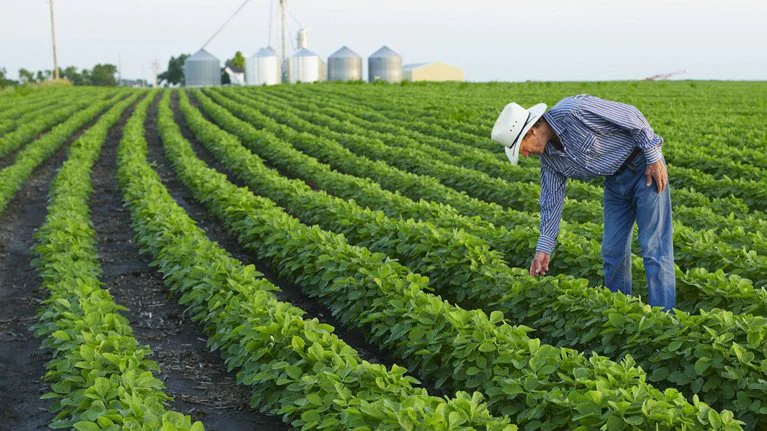Agriculture is one of the most vital industries in the world. It provides the food we eat and the materials we use to make clothes and other everyday items. However, the industry faces several challenges, such as climate change and growing demand for food. Fortunately, advancements in technology have the potential to address these challenges and increase efficiency, productivity, and sustainability in the industry. In this article, we will explore the role of technology in agriculture’s connected future and the opportunities presented by advanced ways of farming.
Advancements in Agricultural Technologies
Precision agriculture and IoT
Precision agriculture is a method that uses technology to optimize crop yields and reduce waste. It involves the use of sensors, GPS mapping, and other data-driven tools to monitor crop health, soil moisture, and other environmental factors. One of the key technologies driving precision agriculture is the Internet of Things (IoT), which allows farmers to collect and analyze data in real-time.
IoT applications in agriculture are varied and include soil sensors, drones, and autonomous tractors. Soil sensors can monitor soil moisture levels and provide data on nutrient levels, enabling farmers to optimize fertilizer use and reduce waste. Drones can survey fields and create detailed maps of crop health, allowing farmers to identify areas that need attention. Autonomous tractors can plant and harvest crops more efficiently, reducing labor costs and improving productivity.
Robotics and automation
Robotics and automation are also playing an increasingly important role in agriculture. Robotic technology can perform tasks such as planting, harvesting, and pruning, improving efficiency and reducing labor costs. One example is the use of autonomous drones to pollinate crops, which could potentially replace traditional pollinators such as bees that are facing population declines.
Biotechnology and genetics
Biotechnology and genetic modifications are also transforming agriculture. Genetic modifications can produce crops that are resistant to pests and diseases, reducing the need for harmful pesticides and herbicides. They can also increase yields and improve the nutritional content of crops. Biotechnology can also be used to produce animal products more sustainably, such as lab-grown meat.
Advanced Ways of Farming
Vertical farming
Vertical farming is a method of growing crops in stacked layers, using minimal space and resources. It is an alternative to traditional farming methods, which can require large amounts of land, water, and energy. Vertical farming can be done indoors, using artificial lighting and hydroponic or aeroponic systems to grow crops.
The benefits of vertical farming are numerous. It can increase yields by up to ten times, reduce water usage by up to 70%, and eliminate the need for pesticides and herbicides. It also has the potential to produce crops year-round, regardless of climate or weather conditions.
Controlled environment agriculture
Controlled environment agriculture is another advanced way of farming that involves growing crops in a controlled environment, such as a greenhouse or indoor farm. The environment can be optimized for crop growth, with factors such as temperature, humidity, and lighting carefully regulated.
The benefits of controlled environment agriculture include increased yields, reduced water usage, and improved crop quality. It also allows for year-round production and the ability to grow crops in areas where traditional farming methods are not feasible.
Urban agriculture
Urban agriculture is the practice of growing crops in urban areas, such as on rooftops or in community gardens. It can help address food insecurity in urban areas and reduce the carbon footprint of food production by reducing transportation distances.
Urban agriculture technologies include rooftop gardens, hydroponic systems, and community gardens. These methods can increase access to fresh produce in urban areas, provide education on sustainable farming practices, and foster community engagement.
Challenges and Opportunities
Challenges facing the agricultural industry
Despite the potential of technology and advanced ways of farming, the agricultural industry still faces several challenges. One of the most significant challenges is climate change, which is affecting crop yields and causing more extreme weather events such as droughts and floods. These weather events can damage crops and reduce yields, making it more difficult to feed a growing population.
Another challenge is the growing demand for food. The world’s population is expected to reach 9.7 billion by 2050, which will require a 70% increase in food production. At the same time, there is a need to produce food more sustainably, using fewer resources and reducing greenhouse gas emissions.
Opportunities presented by technology
Despite these challenges, technology and advanced ways of farming present numerous opportunities for the agricultural industry. One of the most significant opportunities is increased efficiency and productivity. By using technology to monitor crops and automate tasks, farmers can produce more food with less waste and labor.
Another opportunity is improved sustainability and environmental impact. Advanced ways of farming such as vertical farming and controlled environment agriculture use fewer resources and produce less waste and emissions than traditional farming methods. Biotechnology and genetic modifications can also reduce the use of harmful pesticides and herbicides, making food production more sustainable.
Technology also presents new markets and opportunities for growth. For example, the market for plant-based and lab-grown meat is growing rapidly, providing new opportunities for farmers and food producers. The increasing use of precision agriculture and data-driven decision making also presents opportunities for agricultural technology startups.
Need for Collaboration and Education
While technology and advanced ways of farming present numerous opportunities for the agricultural industry, their adoption requires collaboration between farmers, technology companies, and policymakers. Education is also crucial to ensure that farmers and other stakeholders understand the benefits and potential drawbacks of these technologies and can make informed decisions about their use. By working together and investing in education, the agricultural industry can realize the full potential of technology and advanced ways of farming for a more sustainable and productive future.
Conclusion
In conclusion, agriculture’s connected future is driven by advancements in technology, which have the potential to increase efficiency, productivity, and sustainability in the industry. Precision agriculture and IoT, robotics and automation, and biotechnology and genetics are all transforming the way food is produced. Advanced ways of farming such as vertical farming, controlled environment agriculture, and urban agriculture are also presenting new opportunities for food production. While the industry still faces challenges such as climate change and growing demand for food, technology and advanced ways of farming present numerous opportunities for growth and sustainability. The future of agriculture is connected, data-driven, and sustainable.





